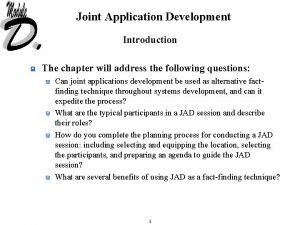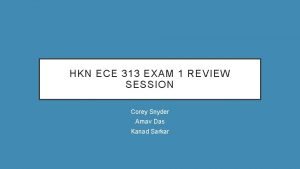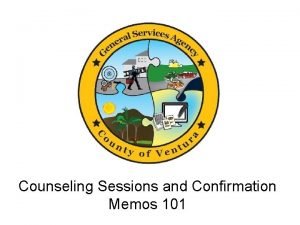PURPOSE AND GOALS OF DISCUSSION SESSIONS GOALS Identify







- Slides: 7

PURPOSE AND GOALS OF DISCUSSION SESSIONS

GOALS Identify and understand the criteria that alternatives (chemical and/or no chemical) will need to satisfy to be an effective replacement. Understand lessons learned from previous work that can be used to inform future substitutions. Identify a list of measures, for example, for worker protection, other than chemical substitution, that could be used to reduce exposure to TCE in the given applications.

GOALS Provide a summary of the conclusions reached during each of the two discussion sessions that will identify: Key common elements that can help to transition to safer alternatives or implement exposure reduction measures Specific chemicals or formulations that have been shown to be effective replacements for TCE in some applications. Specific applications for which there are no known, viable alternatives to TCE as well as identify other methods to reduce risks in these applications. Make the knowledge and experience that will be shared today and tomorrow available to others using TCE who are looking for risk reduction opportunities.

DEVELOPING CRITERIA Systems Approach Identify the industrial process Performance Chemistry Productivity, throughput Health and Environmental Cost Why the chemical Why not the chemical User

QUESTIONS TO CONSIDER IN THE CASE STUDIES Where was TCE used and why? What was the impetus for seeking an alternative for TCE? What considerations were taken into account to identify potential alternatives? How was the list of potential alternatives narrowed down? How were alternatives evaluated for efficacy? How were environmental/health considerations taken into account in identifying alternatives? How was a final alternative selected for use? What lessons were learned in reducing exposure to TCE that could help inform future decision making?

POTENTIAL OUTCOMES: AEROSOLS AND COLD CLEANING List of criteria that potential alternatives will need to satisfy if they are to be used as replacements for TCE. What key lessons were learned in transitioning from TCE to an alternative that could help inform future substitutions? Are there generalizations that can be made so that future substitutions are easier to conduct? Are there any characteristics, or combinations of characteristics that resulted in no viable alternatives to TCE? List of measures other than chemical substitution that can be used to reduce exposure to TCE.

POTENTIAL OUTCOMES: VAPOR DEGREASING List of criteria that potential alternatives will need to satisfy if they are to be used as replacements for TCE. What key lessons were learned in transitioning from TCE to an alternative that could help inform future substitutions? Are there generalizations that can be made so that future substitutions are easier to conduct? Are there any characteristics, or combinations of characteristics that resulted in no viable alternatives to TCE? List measures other than chemical substitution that can be used to reduce exposure to TCE as a vapor degreaser.













